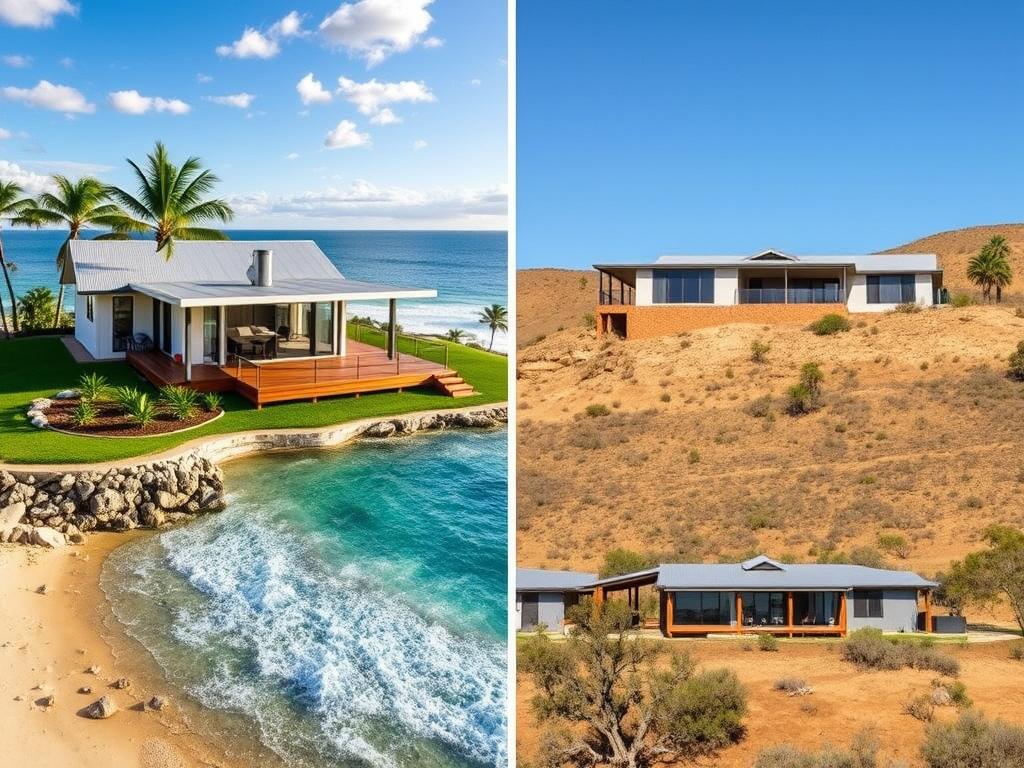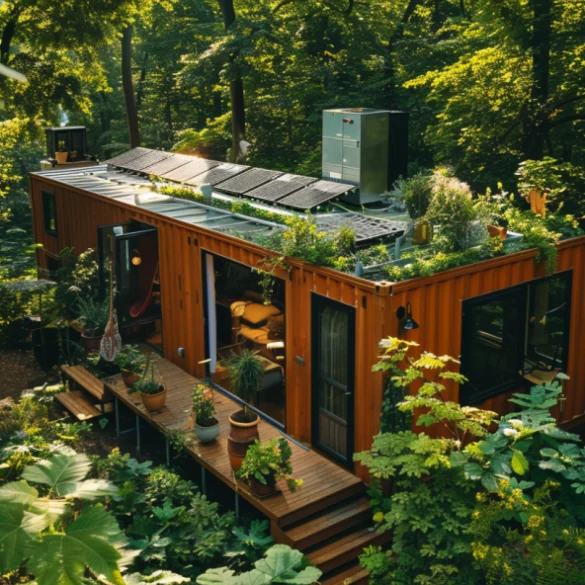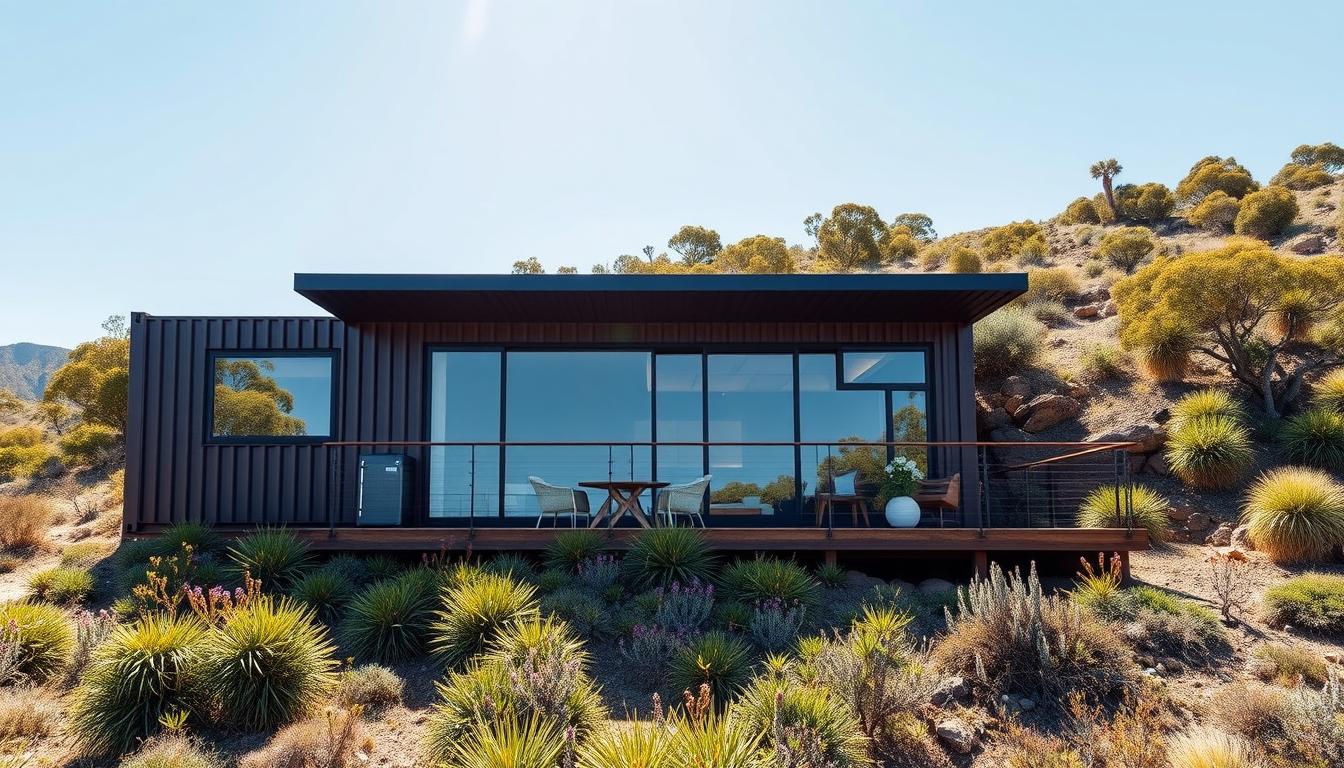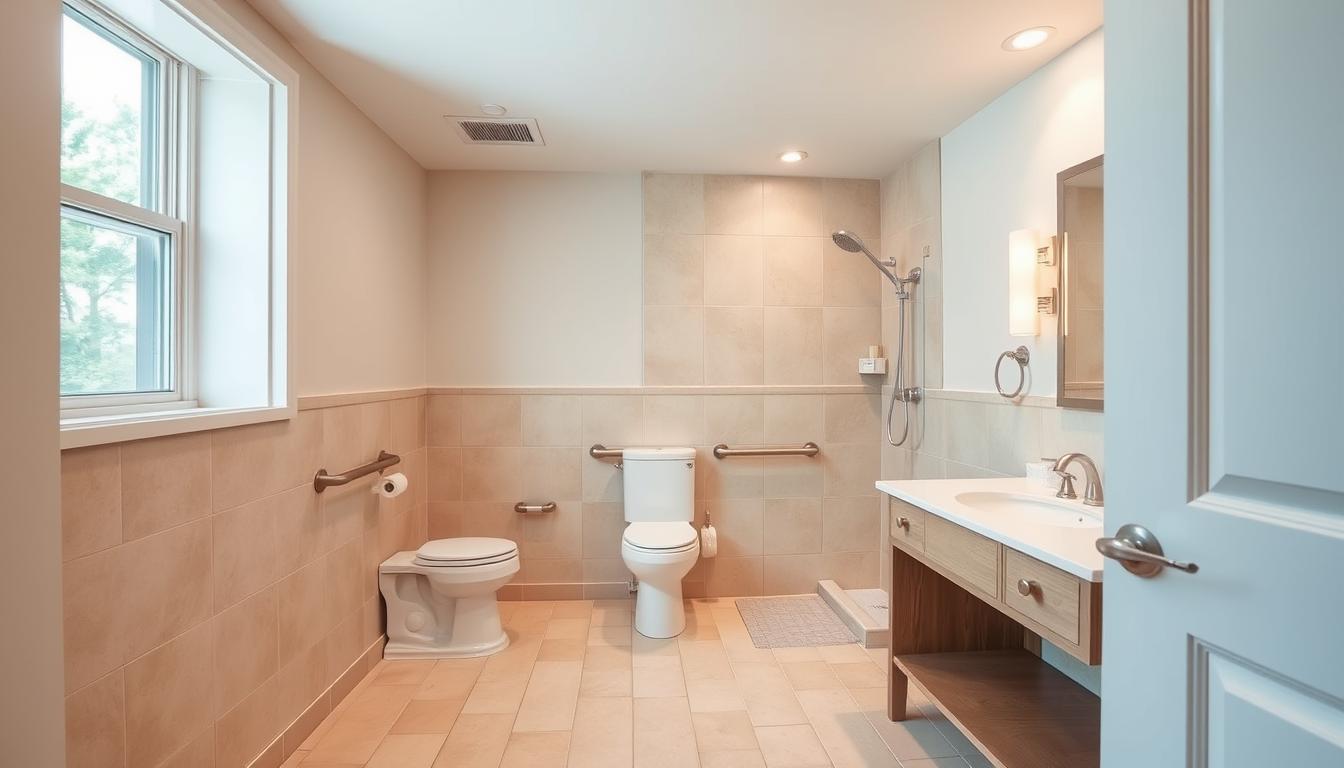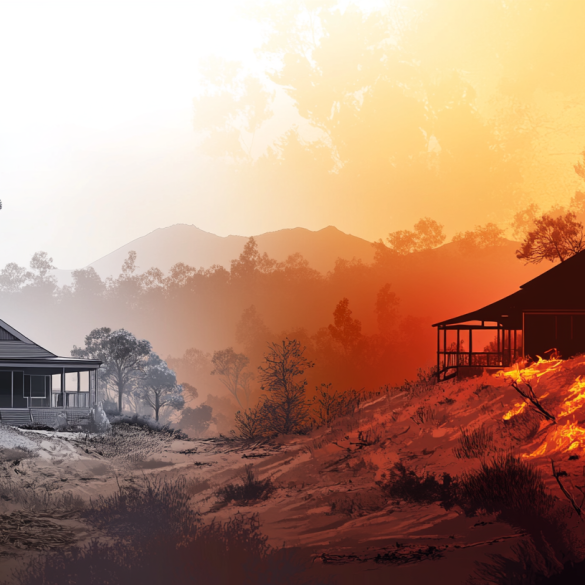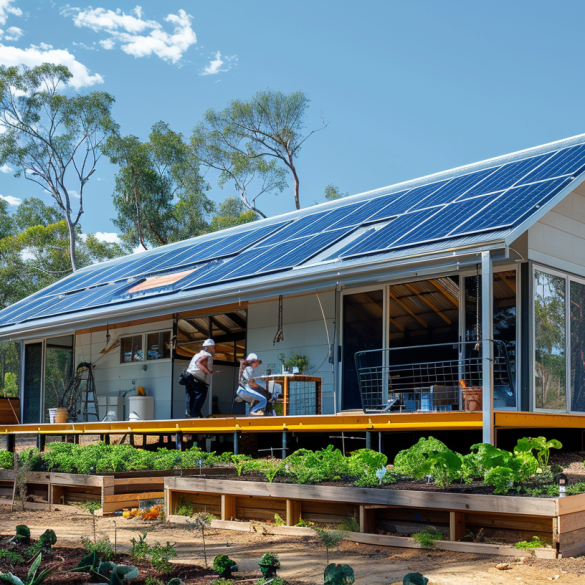Queensland’s varied landscape is perfect for building modular homes. This guide looks at the main differences between coastal and inland homes. We’ll talk about climate, design, materials, and rules. Knowing these differences helps homeowners and builders make smart choices in Queensland.
Key Takeaways
- Queensland’s coastal and inland regions present distinct opportunities and challenges for modular home construction.
- Coastal modular homes need special design and materials to handle the tough marine environment. Inland homes focus on saving energy and adapting to the climate.
- Rules, like zoning and coastal management, are key when deciding on coastal or inland modular homes.
- Planning and customizing are vital for making sure modular homes last long, are sustainable, and cost-effective in Queensland.
- It’s important to think about the unique climate of coastal and inland areas to get the most out of modular home building in Queensland.
Understanding Modular Homes in Queensland
Modular homes are getting more popular in Queensland. They offer a new way to build homes. These homes are made in a factory and then put together on-site. This makes them faster, cheaper, and more flexible than traditional homes.
What are Modular Homes?
Modular homes are built in a factory in sections. These sections are called “modules.” They are then moved to a site and put together quickly.
This way of building means better quality, less waste, and faster projects.
Benefits of Modular Homes
- Faster construction times: Modular homes can be built in just 40 days. This is because they are made in a factory and put together quickly.
- Energy efficiency: Modular homes are very energy efficient. They are designed to save energy in both hot and cold weather.
- Customization options: You can customize modular homes a lot. You can choose different finishes and add special features like laser-cut steel verandahs.
Environmental Impact of Modular Homes
Modular homes are better for the environment than traditional homes. They use materials that can withstand the weather and are energy efficient. They also waste less during construction.
Some modular homes can even run without electricity. They use solar power and have eco-friendly water and sewage systems.
Modular homes in Queensland are a good choice for many. They are versatile and help the environment. They meet the needs and wants of people in the area.
Coastal Modular Homes: Features and Benefits
Modular homes line Queensland’s coast, built to last against the sea. They use special materials and designs. This makes them perfect for a coastal life.
Design Considerations for Coastal Living
Coastal homes in Queensland are made with the sea in mind. They have high foundations to keep out storms. And they are built to handle strong winds.
These homes also let in lots of air and have great views. This makes living inside and outside feel the same.
Common Materials Used
- Galvanized steel frames: Corrosion-resistant and durable in the salty air.
- Fiber cement cladding: Resilient against weathering and UV exposure.
- Marine-grade hardware: Specially engineered to withstand coastal conditions.
Advantages of Coastal Modular Homes
Coastal modular homes are loved in Queensland. They are built fast, thanks to off-site manufacturing. This means you can move in quickly.
They also come in many designs. This lets homeowners make their homes fit perfectly with the coast.
“Modular homes provide the perfect balance of resilience and style for those seeking a coastal lifestyle in Queensland.”
Looking for a beach house or a vacation spot? Coastal modular homes are a great choice. They match the climate and lifestyle of Queensland.
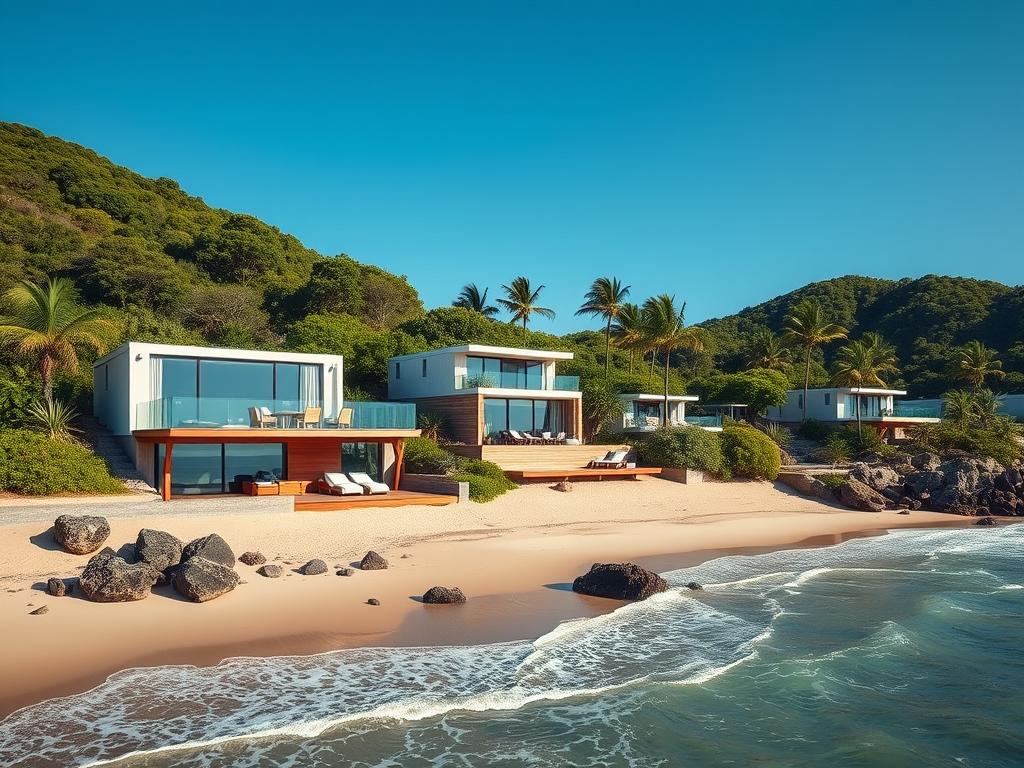
Inland Modular Homes: Features and Benefits
When looking at modular homes in Queensland, inland areas have special needs. These homes face extreme temperatures and bushfire risks. They use special insulation and materials to stay safe, comfy, and save energy.
Design Considerations for Inland Living
Inland homes in Queensland are built to last. They have strong insulation, fire-safe cladding, and save water. They’re made for the tough inland climate.
Common Materials Used
These homes use steel frames, brick, and special cladding to fight fires. These materials keep the home strong and safe. It’s a smart choice for inland Queensland.
Advantages of Inland Modular Homes
Inland homes might cost less to build than coastal ones. Their design also fits different lands well. This makes them great for tough places.
Energy Efficiency in Inland Homes
Keeping energy use low is key for inland homes. They use solar design and insulation to stay cool or warm. This saves energy, even in extreme weather.
“Modular homes offer a sustainable and cost-effective solution for those looking to build in Queensland’s inland regions, with features designed to provide comfort, safety, and energy efficiency.
Knowing what inland modular homes offer helps homeowners make the right choice. It fits their lifestyle, budget, and values in Queensland’s unique areas.
Climate Considerations in Queensland
In Queensland, knowing the coastal and inland climates is key for building modular homes. These climates affect how your home is designed, what materials are used, and how well it performs.
Coastal Climate Characteristics
Queensland’s coast has high humidity, salt-laden air, and cyclones. Homes here need strong materials to fight off the salt and weather. It’s important to have sturdy roofing, durable siding, and good ventilation to keep homes safe and comfy.
Inland Climate Characteristics
Inland Queensland faces big temperature swings, low humidity, and drought. Homes here must handle the heat and protect against fires. Using the right weather-resistant materials helps keep homes cool and safe.
Knowing the coastal vs inland climate considerations is key for choosing the right Queensland Coastal vs. Inland Modular homes. Using weather-resistant building materials and designing for the climate ensures homes do well in Queensland’s varied landscape.
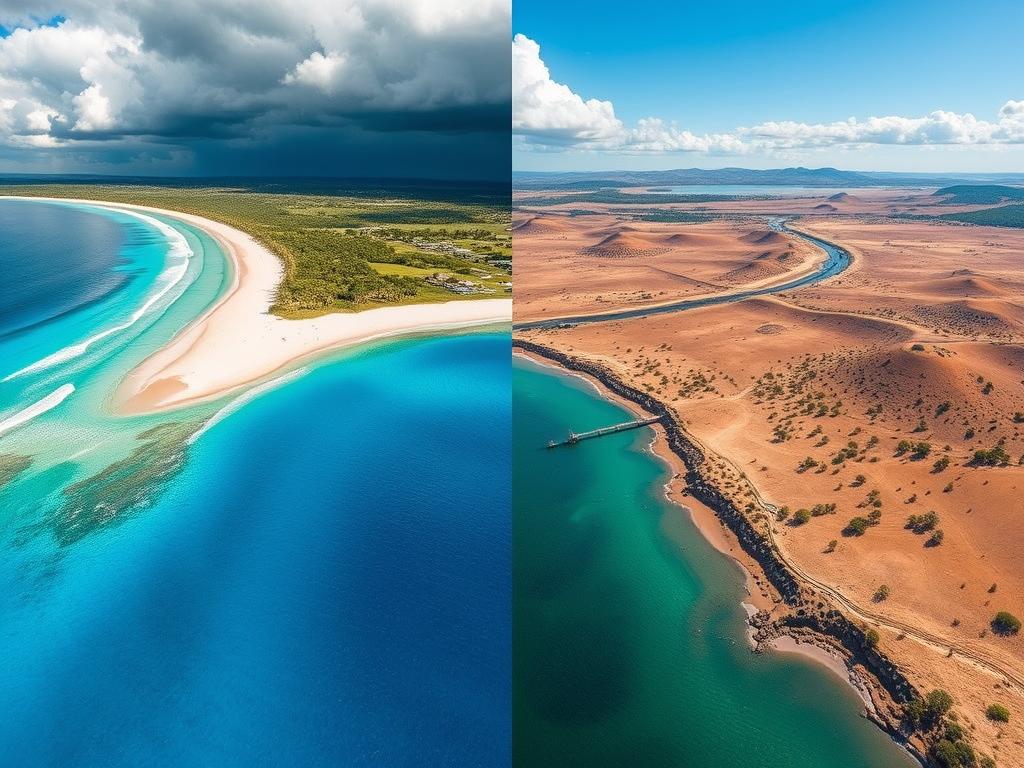
Cost Comparisons: Coastal vs. Inland Modular Homes
When looking at modular homes in Queensland, the cost difference between coastal and inland homes matters a lot. Both have their own benefits, but knowing the costs can help you decide.
Pricing Factors for Coastal Homes
Coastal homes need special materials and foundations to handle the sea’s challenges. This makes them more expensive than inland homes. Also, moving parts to coastal areas can increase the cost.
Pricing Factors for Inland Homes
Inland homes are cheaper to build because they don’t need coastal-specific features. But, they might need better insulation or HVAC systems for comfort and energy savings.
Long-Term Investment Perspectives
- Thinking about the future, property value and upkeep costs are key.
- Coastal homes might grow in value faster, but need more upkeep because of the weather.
- Inland homes might not grow as fast in value, but save money on upkeep and energy.
| Factors | Coastal Modular Homes | Inland Modular Homes |
|---|---|---|
| Initial Cost | Higher due to specialized materials and foundation requirements | Lower, as they do not require the same level of specialized features |
| Transportation Logistics | Can add to the overall cost due to remote coastal site locations | May be less expensive, depending on the accessibility of the inland site |
| Long-Term Appreciation | Tend to have higher appreciation rates, especially in popular tourist destinations | May appreciate at a slower pace, but have lower maintenance costs and energy-efficient features |
| Maintenance Costs | May require more frequent maintenance due to harsh coastal environments | Typically lower, as they are less exposed to extreme environmental conditions |
By looking at the costs and future value, you can choose the right home for you. This decision should match your budget, lifestyle, and goals in Queensland.
Planning and Zoning Regulations
Building modular homes in Queensland needs you to know the local rules. Coastal and inland areas have different rules. It’s important for homeowners and builders to understand these.
Relevant Coastal Regulations
Coastal areas in Queensland have strict rules. These are to protect against storms and ensure safety. Sustainable Home Magazine says these rules help keep coastal communities safe.
Inland Zoning Requirements
Inland areas focus on fighting bushfires and saving water. Zoning laws here affect how homes are built. Builders must plan carefully.
Navigating Local Government Policies
Coastal and inland areas have different rules. You need to know these to get building permits and connect to infrastructure. It’s key to talk to local authorities and keep up with new rules.
For a smooth build, talk to local officials. Stay current with coastal and inland rules.
“By 2046, South East Queensland is expected to have a population of 6 million, with an additional 2.2 million people requiring almost 900,000 new homes and almost one million new jobs.”
The State Planning Policy in Queensland guides growth and development. It focuses on sustainable and resilient communities. Following these rules helps make sure your home project fits the state’s vision for the future.
Construction Timeline: Coastal vs. Inland
Modular home construction times differ a lot between coastal and inland areas in Queensland. It’s key for homeowners and builders to know these differences. This helps manage expectations and ensures a smooth project.
Expected Timeline for Coastal Modular Homes
Building modular homes by the coast takes longer. This is because of extra site prep and weather delays. Coastal areas need stronger foundations to fight off harsh weather. Transportation logistics also play a role, as moving parts can be tricky due to road and bridge limits.
Expected Timeline for Inland Modular Homes
Inland homes are built faster. The ground is more stable, needing less prep work. The weather is also more steady, cutting down on delays. Modular home construction here benefits from easier logistics and quicker material delivery.
| Coastal Modular Homes | Inland Modular Homes |
|---|---|
| Extended timeline due to additional site preparation and potential weather-related delays | Shorter timeline due to more stable ground conditions and predictable climate |
| Transportation logistics can present challenges in module delivery | Streamlined logistics and efficient delivery of materials and components |
Knowing the timelines for coastal and inland modular homes helps plan better. It’s great for managing expectations and ensuring a smooth build. This info is key when choosing where to build your modular home in Queensland.
Customization Options for Modular Homes
Modular homes in Queensland let you make your living space your own. You can choose features that fit your style and needs. This is more than what you get in traditional homes.
Coastal Customization Opportunities
Coastal homes can have big windows and sliding doors for great views. You can also add balconies or decks for outdoor living. Using materials like stainless steel and weather-resistant siding helps your home last longer by the sea.
Inland Customization Opportunities
Inland homes focus on keeping you comfortable and saving energy. You can add double-glazed windows and insulation to keep the temperature right. Smart home tech, solar panels, or geothermal systems can also help save energy.
Modular homes are great for making your space unique. You can pick your layout, finishes, and tech. Working with experts like those in Sustainable Home Magazine helps you create a home that’s truly yours.
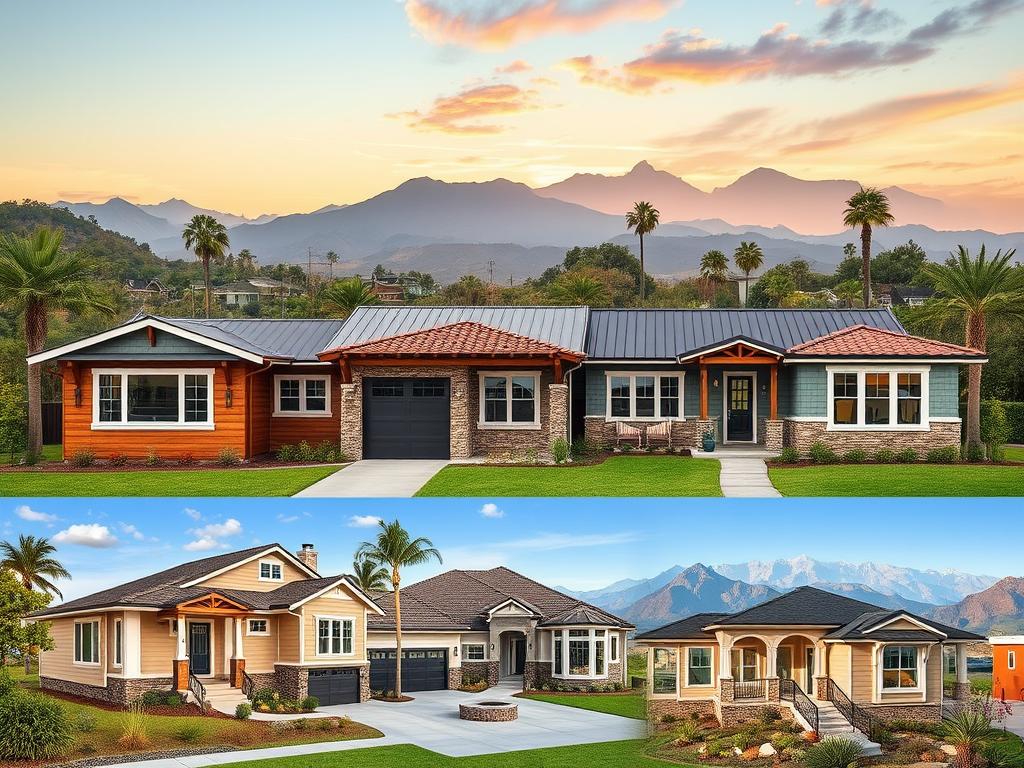
Maintenance and Durability Considerations
Modular homes in Queensland need careful thought about maintenance and durability. This is especially true for coastal and inland areas. Each region has its own environmental challenges that affect your home’s life and performance.
Coastal Environmental Challenges
Coastal homes face salt corrosion, moisture, and storm damage. Keeping the exterior and structure in good shape is key. Using top-notch, weather-resistant materials is crucial for coastal areas.
Inland Environmental Challenges
Inland homes deal with UV damage, dust, and termites. A maintenance plan that fits your area’s needs is vital. This keeps your home strong and working well.
All modular homes in Queensland benefit from durable materials and a good maintenance plan. This approach helps your home last long and stay strong against local environmental factors.
“Proper planning and implementation of maintenance works are based on condition programs, historical data, and agency asset planning.”
Creating a detailed maintenance plan is essential for your modular home’s health. Whether it’s coastal or inland, using quality materials and a custom maintenance schedule boosts your home’s durability and value in Queensland.
Sustainability and Eco-Friendly Options
More people want homes that save energy and are good for the planet. Both coastal and inland modular homes in Queensland are getting better at this. They use new ways to cut down on carbon and make life better for those who live there.
Sustainable Practices in Coastal Construction
Coastal homes in Queensland are at the forefront of green building. They use recycled and local materials like old wood and steel to lessen harm to the environment. They also collect rainwater and use natural ways to cool homes to save on energy.
Sustainable Practices in Inland Construction
Inland homes in Queensland focus on being green too. They use the sun’s heat to warm and cool homes, which is called passive solar design. They also use special insulation and plants that don’t need much water. Plus, they have solar panels to make clean energy.
These green steps are shown in Sustainable Home Magazine. They show how builders in Queensland are making homes that are good for the planet. These homes meet the needs of people living by the coast and in the country.
“Sustainability is not just a trend; it’s a necessity. Modular home construction in Queensland is leading the way in creating energy-efficient, eco-friendly living spaces that will benefit both the environment and the homeowners for generations to come.”
| Sustainable Coastal Practices | Sustainable Inland Practices |
|---|---|
|
|
Choosing the Right Location for Your Modular Home
Choosing the right spot for your modular home in Queensland is key. You might want the coast or the calm of inland areas. Knowing what each offers helps you pick the best place for you.
Factors to Consider on the Coast
The coast offers peace and beauty. But, think about how close it is to the sea and if it’s safe from erosion. Talk to local officials and check the site to avoid problems.
Also, look at nearby services and future growth. This ensures your coastal home fits your life and plans.
Factors to Consider Inland
Inland areas are peaceful and calm. But, soil stability, water access, and bushfire risks are important. Check local rules and what’s available nearby.
This helps you choose the best spot for your inland home. It meets your needs and adds value over time.

